Ihlara Valley, is a canyon that was shaped by the Melendiz River thousands of years ago at 100m depth. The valley is believed to be inhabited by more than four thousand houses and hundreds of churches decorated with frescoes. Hard tp believe that approximately 80 thousand people once lived in Ihlara Valley.
Ihlara Valley, renowned as Peristremma in historical sources, is one of the rare areas where nature, history, art and culture come together with its vegetation, churches and chapels.
Ihlara Valley Drone View Video
Ihlara Valley Photo Gallery


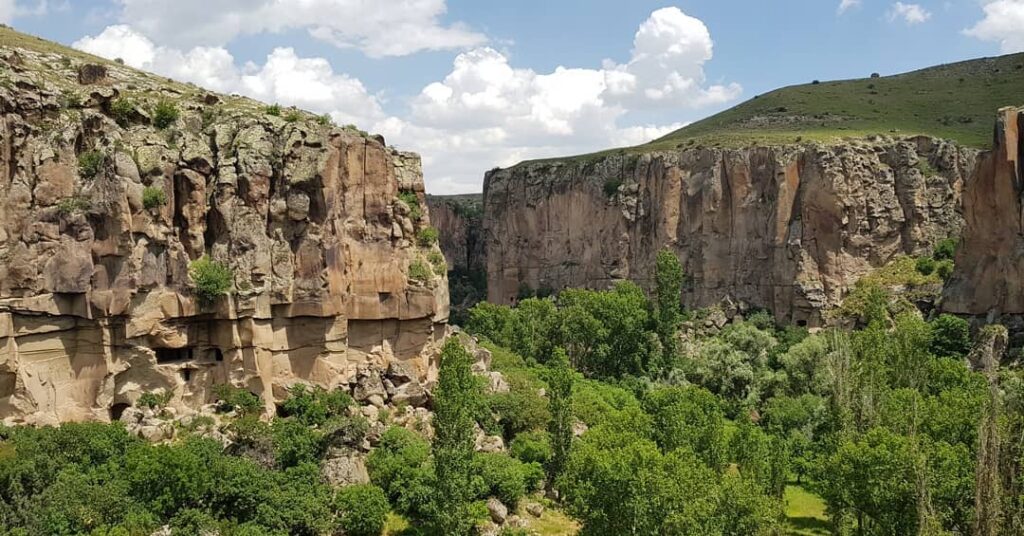
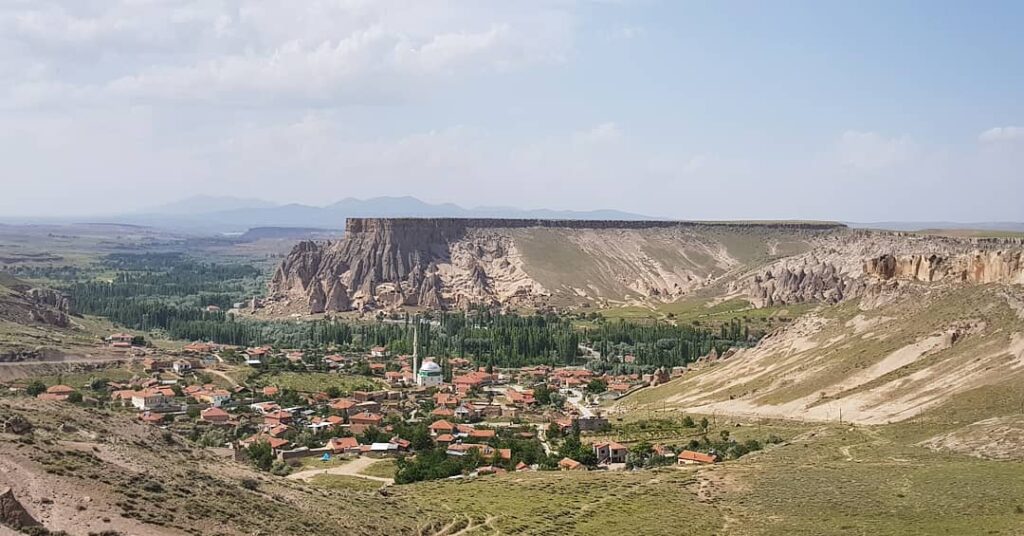
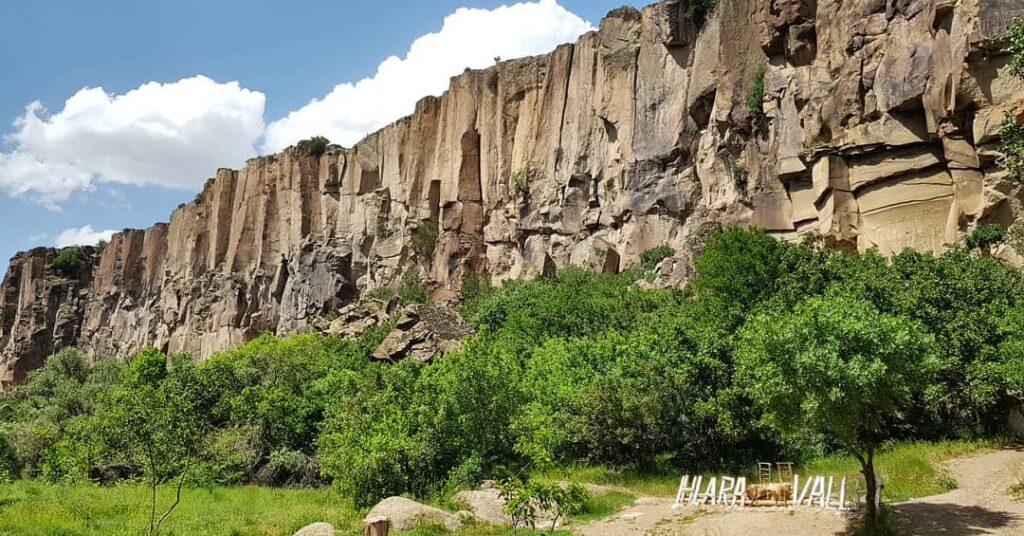


How to get to Ihlara Valley:
It is 35 kilometres from Aksaray city centre. It is possible to reach Ihlara Town from the city centre by public transport every hour.
Address: Ihlara Town, Güzelyurt / Aksaray

Where is Ihlara Valley?
Ihlara Valley, located within the borders of Güzelyurt District of Aksaray Province, has an important fame among the canyons in the world. Ihlara Valley, which is 18 kilometres long, an average of 150 metres deep and 200 metres wide, with thousands of living spaces, is the largest canyon in the world to have been inhabited by people in the past, unlike other canyons.
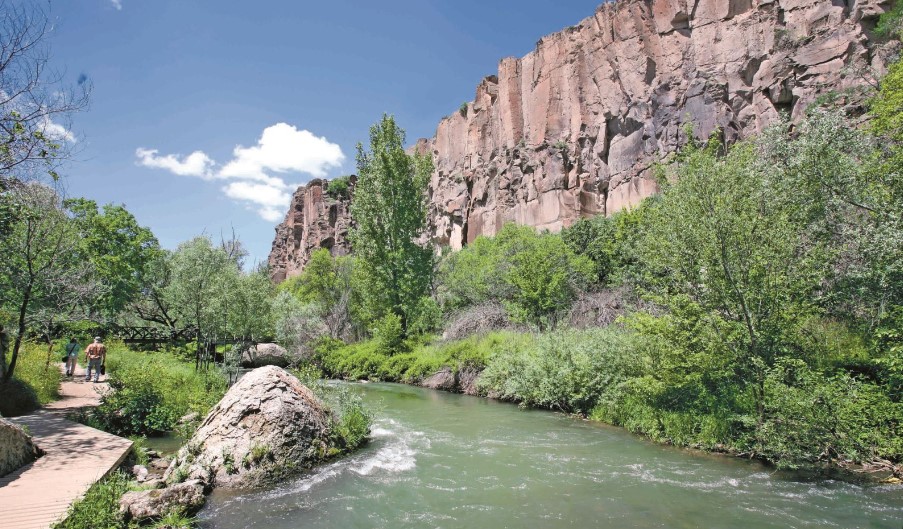
Detailed Info About Ihlara Valley
The Melendiz River, which formed the Ihlara Valley and gave life to it, is the main source of life here. Hundreds of churches and rock-carved places created by the easy carving of the rocks surrounding the valley have made the valley one of the most important cultural centres of the world.
Actually the Melendiz River formed the Ihlara Valley through the thousands of years of erosion in addition to tectonic uplifts, which runs over the area that collapsed after the eruption of the Hasandağı volcano. The Melendiz Stream cuts deep and steeply through the land along the Ihlara Valley, creating magnificent views along the valley. Small streams originating from the Melendiz Mountains merge and flow in the southeast-northwest direction and reach the Mamasın Dam. Melendiz Stream meanders about thirty times along the valley. Although the distance between Ilısu and Selime is 10 kilometres as the crow flies, the actual distance is 18 kilometres due to the meandering course of the stream.
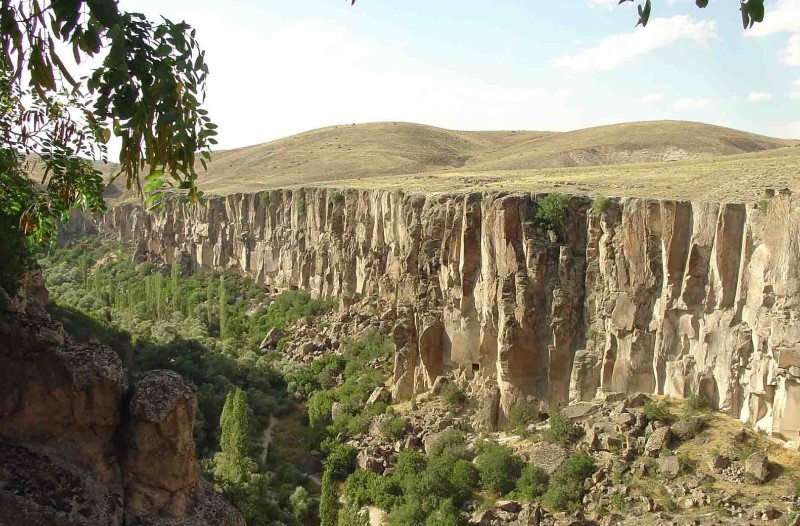
Natural Beauty of Ihlara Valley
Another remarkable feature of the Ihlara Valley is its natural beauty. On the edge of the water at the bottom of the steep, deep and narrow valley like a wall, there is a dense strip of greenery consisting of vineyards and gardens. It is as if nature has hidden itself in the valley.
Steppe-like and spindly vegetation is dominant around the valley. When you reach the slopes of the valley, you see that a rich and green piece of nature is hidden in the valley. Unlike the continental climate in the region, the valley floor has a climate close to the Mediterranean climate. The valley floor is a natural microclimate area with this feature. Accordingly, a wide variety of plants, especially pistachios, grow on the valley floor.
Cave Churches in Ihlara Valley
The frescoed churches carved into the rocks in the Ihlara Valley have been preserved and have survived to the present day as a unique historical treasure. These frescoed churches and settlements, which were created by easily excavating the rocks since the first years of Christianity, are located in the Ihlara Valley, which continues for 14 kilometres from Ihlara to Selime.

The first examples of these churches in the Ihlara Valley, where nature and history coexisted in the middle of the Cappadocia River (Patamos Cappadocus) in the early ages, can be traced back to the IV century AD. The painting technique of the churches can be divided into two parts. The churches around Ihlara show features known as “Cappadocian Type”. Examples of these are: Eğritaş, Ağaçaltı, Kokar, Pürenliseki and Yılanlı Churches. The ones in the Belisirma section are famous for “Byzantine Type” paintings.

Type: Canyon Tourism, Nature-Culture tourism
Telephone: +90 (382)-213-24-74
Fax: +90 (382)-212-35-63
E-Mail: iktm68@kultur.gov.tr
